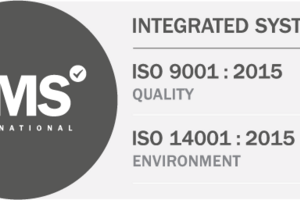01 February 2019
Night shifts: Using LEDs to boost your bottom line
When it comes to warehousing, exposing night staff to the right light can have big implications for productivity and morale
As you sink into bed this evening and fall fast asleep, millions of men and women across Britain are just beginning their working day. Over three million of us will be gearing up to start a night shift, powering our economy through the hours of darkness.
According to TUC analysis, one out of every nine British employees now works night shifts, with warehouse work steadily inching its way up the top 10 most common nocturnal occupations.
Yet while our 24-hour appetite for goods and services triggers increased demand for nocturnal staff, the hidden health risks associated with night work are now well documented.
Shift work seriously disrupts the body clock and, as a result, is linked to a higher risk of heart disease, obesity and fatigue. It’s even been classified as a probable carcinogen by the World Health Organisation.
Tiredness and antisocial work hours can also dislocate an employee’s home life. And inevitably, all these factors will impact performance over time, with fatigued workers more prone to mistakes, accidents and injuries.
So, what can you do to mitigate the impact that night working has on your staff? Here, Greenlite Group explains how LED lighting can cater for the unique demands of our nocturnal workforce, improving their wellbeing and boosting productivity in the process.
A brighter environment: Just as a well-illuminated, evenly-lit warehouse will have a positive impact on staff morale, a dim, shadowy workspace can seriously sap the spirits. Flickering fluorescent strips are associated with eyestrain and headaches, while washed out lighting will only exacerbate a night worker’s sense of fatigue.
In contrast a good lighting design – using a mixture of LED high bays, task lighting and floodlights – has the power to transform the space. It can vastly improve comfort and visibility, reducing the risk of eyestrain and improving accuracy into the bargain. For fatigued night staff, these improvements could minimise potentially costly picking and packing mistakes, while also leading to a huge boost in both drive and productivity.
The human centric solution: The flexibility of an LED system means the colour and intensity of light can be adjusted across a broad range, responding to the changing needs of your staff over a 24-hour period.
For example, the HSE recognises that bright lights (>6000 lux) could have the potential to trigger changes in the internal body clock, helping staff adjust to night work and feel more alert.
Likewise, a blue-rich light that more closely replicates daylight is also thought to suppress melatonin, stimulating our bodies into wakefulness. Put simply, LED lighting has the potential to help employees feel more energised when they would naturally crave sleep.
Safety first: Warehouses can be notoriously perilous places to work, with fatigue leaving night staff particularly vulnerable to accidents and injury.
Sadly, poor lighting is all too often a contributing factor, with potentially tragic and costly consequences. With expert design, a carefully considered LED lighting system can eliminate dangerous areas of glare and shadow, ensuring everyone from vehicle operators to packers has clear visibility.
Peace of mind: Just as travelling to work during antisocial hours can leave employees feeling vulnerable, night staff are unfortunately at greater risk of violence. But with sound security lighting, you can help employees feel safer. Ensure car parking, pathways and external storage areas are well-lit, with no patches of shadow to disguise unwanted visitors. It’ll give night staff peace of mind, encouraging them to feel more positive and focused when they clock on.
At Greenlite Group, we believe good lighting has a powerful influence on wellbeing and productivity. That’s why we’re encouraging those in the industry to take part in our WELL Warehouse survey, and tell us how lighting improvements have changed their workspace for the better. Find out more here.
1 HSE (2006): Managing Shift Work, Health and Safety Guidance.


